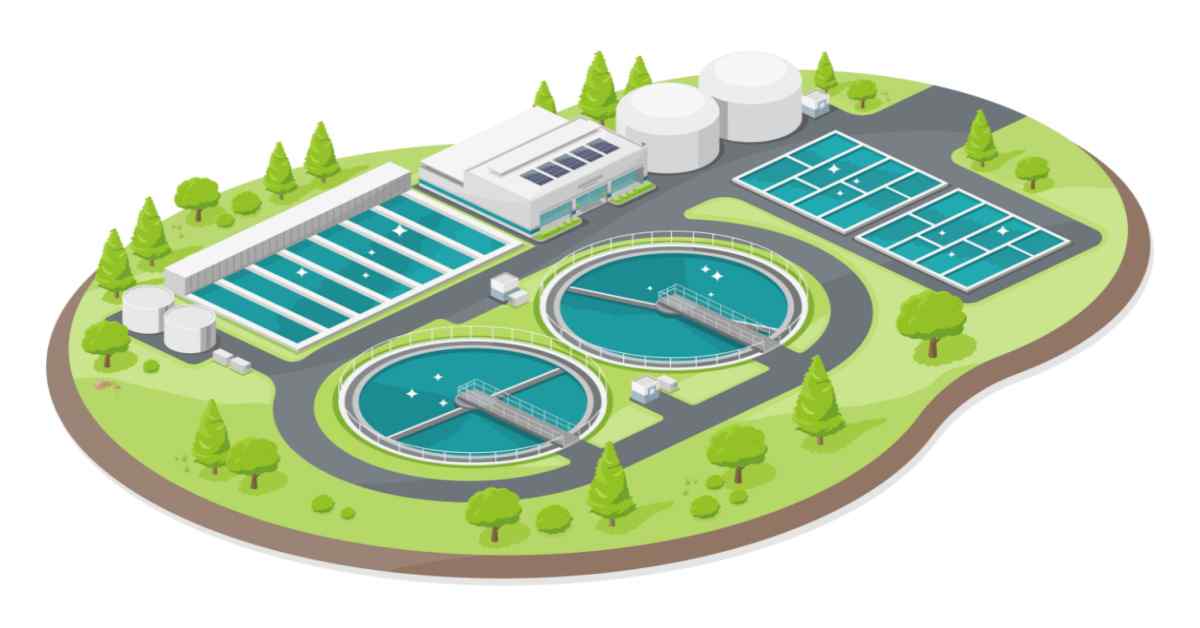Recognizing Wastewater Treatment Processes and Their Ecological Impact
The details of wastewater treatment procedures play a pivotal function in mitigating ecological challenges connected with water air pollution. Each stage, from preliminary to innovative treatments, is developed to resolve specific pollutants, ultimately safeguarding both public health and wellness and marine communities. In spite of technical innovations in treatment efficiency, significant difficulties continue, consisting of the administration of recurring toxins and the effects of nutrient drainage. As we discover the intricacies of these procedures, it comes to be important to question how far present approaches can develop to satisfy the growing demands of sustainability and environmental preservation.
Introduction of Wastewater Treatment
Exactly how is wastewater transformed into a secure source for the atmosphere? Wastewater treatment is a critical procedure made to eliminate pollutants from used water, therefore securing public health and wellness and protecting ecosystems. This procedure begins with the collection of wastewater from property, commercial, and industrial sources, which is then routed to treatment facilities.
At these centers, different physical, chemical, and organic techniques are employed to deal with the wastewater. Initial testing removes huge debris, adhered to by sedimentation to separate larger solids. Consequently, biological treatments, such as turned on sludge processes, make use of bacteria to damage down organic issue. These methods not just decrease toxin levels however also assist in the recovery of useful nutrients.
The dealt with effluent can be securely released into all-natural water bodies or recycled for irrigation and industrial objectives, advertising resource conservation. In addition, the treatment process produces biosolids, which can be repurposed as plant foods or soil modifications, further enhancing sustainability.
Phases of Therapy Procedures
The wastewater therapy process commonly consists of three main phases: initial, key, and secondary treatment. Each stage serves an unique duty in reducing the pollutant tons and making certain the effluent meets environmental standards before discharge.

The primary therapy phase concentrates on the physical splitting up of put on hold solids from the wastewater. With sedimentation, much heavier bits clear up at the end of sedimentation storage tanks, developing sludge, while lighter materials, such as oils and greases, float to the surface and are skimmed. This procedure dramatically lowers the natural and not natural tons in the wastewater.
Additional treatment is an organic process intended at additional decreasing the focus of organic issue. This phase is vital for achieving the needed biochemical oxygen demand (FIGURE) reduction, inevitably leading to cleaner effluent prepared for discharge or further therapy.

Advanced Therapy Technologies
Adhering to the additional therapy processes, progressed therapy innovations play an essential function in more improving the top quality of treated wastewater. These modern technologies are developed to get rid of residual pollutants that are not properly eliminated throughout primary and additional therapies, ensuring the effluent satisfies rigorous regulative criteria.
Amongst the widely used innovative treatment techniques are membrane layer filtration, reverse osmosis, and progressed oxidation procedures. Membrane filtration, consisting of microfiltration and ultrafiltration, is reliable in separating great fragments, microorganisms, and check out this site colloids from the water (Wastewater). Reverse osmosis makes use of semi-permeable membrane layers to remove dissolved solids, leading to high-quality water suitable for different applications
Advanced oxidation procedures (AOPs) use solid oxidants to degrade organic contaminants, including drugs and individual treatment items that are immune to standard therapy. These methods enhance the biodegradability of complex compounds, facilitating their removal.
One more considerable innovation is making use of organic nutrient elimination procedures, which especially target nitrogen and phosphorus, protecting against eutrophication in receiving water bodies. Overall, advanced treatment technologies are important for accomplishing higher levels of purification, promoting water reuse, and safeguarding public health while addressing the challenges connected with wastewater management.
Environmental Benefits of Therapy
Countless ecological advantages emerge from reliable wastewater therapy procedures that contribute to ecosystem health and sustainability. Primarily, these procedures significantly reduce the launch of dangerous contaminants into all-natural water bodies, which aids preserve aquatic ecosystems. By getting rid of impurities such as heavy metals, nutrients, and virus, dealt with wastewater alleviates the risk of waterborne diseases and advertises biodiversity in aquatic environments.
Moreover, wastewater therapy facilities often use sophisticated technologies that enable water recycling and reuse. This technique not just conserves fresh water resources but also minimizes the need on natural water products. Boosted nutrient removal from wastewater can likewise prevent eutrophication, a procedure that brings about algal blossoms and subsequent oxygen exhaustion in water systems.
Furthermore, effective therapy procedures can lessen greenhouse gas emissions, especially methane and laughing gas, which are commonly released during unattended wastewater decay. By recording and utilizing biogas from anaerobic digesters, centers can transform waste into renewable resource, thus adding to a reduction in nonrenewable fuel source dependence.
Challenges and Future Patterns
While the ecological advantages of wastewater treatment are clear, a number of obstacles persist that impede optimum outcomes in this field. One significant concern is maturing infrastructure, which usually results in ineffectiveness and raised operational costs - Wastewater. Lots of therapy plants were made decades ago, and their abilities do not straighten with modern-day needs, that include stricter regulative requirements and greater quantities of wastewater due to urbanization

Looking ahead, there is an expanding emphasis on resource recuperation Get the facts and circular economy concepts within wastewater treatment. Innovations such as anaerobic food digestion, which can create biogas, and advanced purification innovations are gaining grip. These techniques not just improve treatment effectiveness but additionally promote sustainability.
Inevitably, attending to these challenges calls for partnership amongst stakeholders, investment in modern technology, and a commitment to recurring research study. By welcoming these patterns, the wastewater therapy industry can advance to satisfy the needs of a changing setting and society.
Final Thought
In final thought, wastewater therapy procedures play a crucial role in boosting environmental quality and public wellness. The multi-stage treatment framework, coupled with Full Report sophisticated modern technologies, properly mitigates pollution and promotes lasting water monitoring.